PHOTOGRAPHY NOW – Part Of A Continuing Series
By Richard Sexton
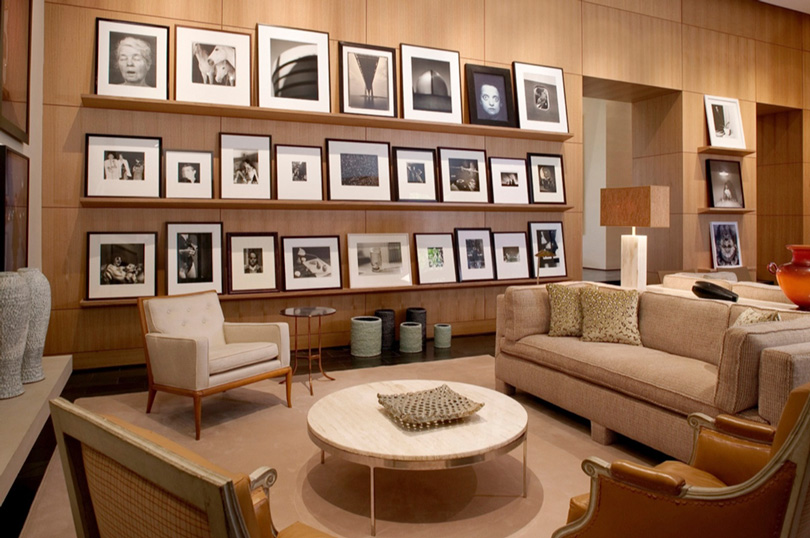
The illiterate of the future will be ignorant of the use of pen and camera alike.
—Laszlo Moholy-Nagy, painter, photographer, Bauhaus instructor, 1936
This is segment 2 in a 3 part series—Photography Then, Now, and Tomorrow. The 1st segment, Photography Then, was published by Luminous Landscape in 3 serializations in December 2015. It was based on personal experiences and observations from my career in photography, which were supplemented with the experiences of five other photographers I have known and worked with over the years: Mike Blumensaadt; Alex MacLean; David Rae Morris; Myko; and Carter Tomassi. The bios of these 5 photographers have been re-published at the end of this installment, as they were with the first one. This segment, like the first, includes numerous observations from interviews with them. If you have not read Photography Then, check the links to the right of this page under Related Articles. It focused primarily on the epic photographic decade of the 1970s. This happened to be the decade I began my career in photography, but the idea that this timeframe was a milestone in the modern history of photography is not my construct. It’s a widely held view for which I merely provided a “cliff notes” synopsis based on my personal perspective. A lot was happening then—Photography was gaining increasing acceptance as an art form. It was becoming a part of the curriculum in higher education and a medium of study in art school. Color photography was first being appreciated as a valuable and artistic medium, just as black and white photography had been before it. A photography career in the applied arts was as viable and profitable as commercial illustration, graphic design, industrial design, fashion design, and other pursuits in the applied arts. All manner of publishing was healthy—picture magazines, art books, corporate newsletters and annual reports—and all featured photography prominently. It was a heady time and dreams of a life in photography were pervasive.
The gestalt of the 70s continued into the 80s and early 90s, but then in the late 90s two critical things happened that would reshape the art and industry of photography, and just as significantly, the printed page. Both were technological developments that arrived at about the same time. The first was the internet, aka the world wide web, and which in the political parlance of the day was commonly described as the information superhighway, the building of which was considered an important governmental and civic obligation. Then Vice-President Al Gore over-claimed he was personally responsible for the emergence of the internet. In fairness, he was one of the first politicians to realize how important this technology would be to the shaping of the 21st century, but hardly alone. The other thing that changed photography abruptly was the arrival of the digital camera. Since the inception of commercial photography with the daguerrotype of 1839, light-sensitive silver compounds had been the medium used to capture the aerial image a lens projected on a focused plane, until science provided another way to do it. A chip consisting of a grid of light sensitive photosites could convert photons into electrons, which could be measured, digitized, and archived to a storage medium. A computer could then decode the cryptic digital data into a recognizable photographic image displayed on a computer monitor. Voila, just like that, you didn’t need film anymore. A digital chip inside the camera could record millions of images over and over again and it could display those images instantly. The photographic data was malleable and instantly transformable because it was digital and like any other digital data it could be massaged, altered and obliterated with the stroke of a key or the click of a mouse. Photography would not be the same thereafter. The tools and techniques were now different, though they were not mandated to be. Conventional cameras, film, the traditional darkroom, and the tried and true method of making photographic images did not disappear. It was still with us, seeking a justification for why it should continue to exist— that debate is still an active one.
As the traditional vs. digital debate raged in academia, the museum and gallery world, and the minds of photographers who were trying to decide how to adopt, or adapt to, the new technology, the commercial practice of photography was not hesitating. Newspapers were one of the first media to shift to the new technology. They had long been shackled by the enormous expense of shooting and processing film quickly enough for a 24 hour (or shorter) news cycle. The effort had been maniacal during the black and white era with photographers processing film in hotel bathrooms; making enlargements with portable enlargers that fit in a suitcase; and prints were made in makeshift dark/bath/rooms and dried with hair dryers before being sent out over “the wire.” But, by the 70s and 80s a huge lab infrastructure was in place and in the large cities, rush services were offered well into the night. It was a no-brainer that a digital solution that was instant, darkroom, and chemical-free, was a better solution for daily publications, even when a digital camera consisted of a frankenstein-like adaptation of a film SLR that was as big as a shoe box, cost $15,000, and offered only 3MP files. An early digital camera had a 2-3 year lifespan before it became completely obsolete, but it was financially feasible for use by any staff photojournalist who routinely shot $8000 to $10,000, in film and processing annually. The camera paid for itself easily within its 2 year lifecycle. And it provided a quicker, easier path to the printed page.
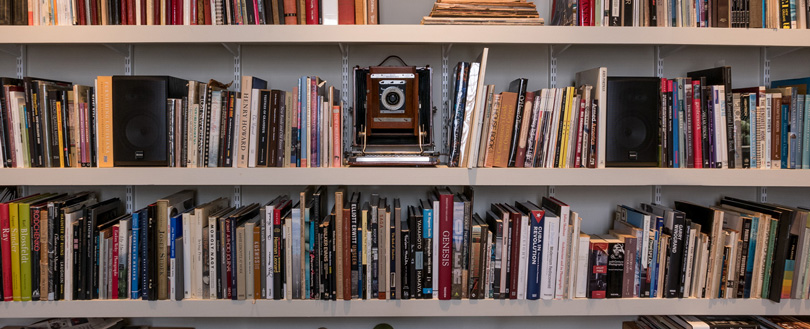
Other commercial specialties were not too far behind. In my commercial practice the shift happened in 2003. Film, processing, and printing were costly expenses that accompanied assignments and now these costs were further encumbered by scanning costs. Clients had web sites and were beginning to send out e-blasts, rather than printed flyers. They may have appreciated the extra quality film provided over the early low-resolution digital capture alternatives, but the currency was digital now and film had to be converted to that medium for clients to fully utilize the photos. I had a very successful real estate development client in the Florida panhandle that was located in a resort area far from any major city. They did everything in-house—maintained a web site, designed and placed ads, and designed all their brochures, flyers, and point of purchase displays. And they gave me a directive, “When a digital camera arrives that will compete with medium format film, we need to go that route to reduce costs and save time. We know we are getting close and will need to crossover to the new technology as soon as its available.” That day came with the arrival of the Canon 1Ds camera, an 11MP full frame camera that was the first DSLR that seriously raised the eyebrows of medium format film shooters, myself included. I switched from a 6×9 field camera and a Nikon F3 film SLR, to a Canon full frame digital system and have been primarily a Canon shooter for commercial projects ever since. The capabilities of this camera, and its immediate descendants, were met with excitement by architect and designer clients and the new technology produced a huge boom in commercial assignments that lasted a good 5 to 8 years, at which point the technology and associated ease of use had gotten too good. This level of technology was now affordable and accessible across the spectrum and launched what I refer to as the “all in-house” phenomenon that is now prevalent in many photo specialty fields.
Myko provided the most succinct narrative of this “in-house” phenomenon, which dramatically affected his own commercial practice in New York. One of his major clients during the film era was the cosmetics company, Clarins Paris. He produced the photographs for their product catalog every year, all of it shot in studio on 4×5 color transparency film. It represented $40,000 in gross revenue annually for his studio. With the arrival of digital photography, the client shifted gears. Myko was replaced by an intern from Pratt, who was given a spare room in the corporate headquarters to work in. Mistakes and imperfections in the principal photography (which were common) could be fixed in Photoshop. Myko lamented that during the film era a photographer’s skill, experience, and confidence, could be sold to the client. With digital, clients have been increasingly willing to work harder to ensure they get the results they need and digital technology provides the feedback loop needed for them to micromanage the image making. Because they can see the results on a computer screen as the images are being made, just as the photographer can, they are more effective overseers and art directors of the creative process. Compared to reviewing Polaroids or getting under the dark cloth to gaze at a reversed, upside down image on a ground glass, reviewing product photography on a color monitor is a breeze. The photographer’s experience isn’t so vital, or marketable, anymore.

As Myko was losing product assignments to kids with DSLRs, Mike Blumensaadt decided to retire from the commercial practice of photography. He was on the cusp of retirement age. Clients were increasingly complaining about paying for film, and were becoming equally intolerant of the extra time and expense of scanning it. The handwriting was on the wall. Digital capture was the future. He could either invest thousands in new equipment and countless hours in self-training to utilize the new technology, or retire now. If he chose to invest in the new technology, he would still be retiring in a few years anyway. As a lifelong film shooter, it made no sense to begin over at that point in his career. It was an unacceptable return on investment. His story was undoubtedly repeated by countless other photographers of his generation. It’s always aggravating when retirement is mandated by outside forces, but retiring at the earliest, rather than the latest opportunity is far easier than what the color lab operators faced. Countless E-6 and C-41 lines, and commercial print services, have closed since the digital revolution began. In many cases, these were large operations with employees, many of them aspiring photographers.
As the photographic landscape was shifting, and shifting livelihoods along with it, other things were happening too. Editorial clients were in serious decline. The internet was stealing both their platform and their advertisers. The great recession of 2007 finished off what the internet had begun. Though the best magazines had a loyal readership and subscription base, the advertising dollars were no longer there, and that had always been the critical revenue component. Google search stole the ad revenue and propelled buyers directly to web sites where products could be elaborately showcased by retailers and manufacturers. Things were even worse for newspapers. The news was already broadcast on television and published on the web before a newspaper arrived on the doorstep. Craig’s List added insult to injury by stealing the classifieds, which were a huge cash cow. The printed page and the dissemination of information, as it was manifested for decades, was suddenly antiquated. The support infrastructure of the printed page, which included photography as a major component, was also radically affected. Digital technology was shrinking the labor field of commercial photography as the internet was eroding the viability of the printed page.
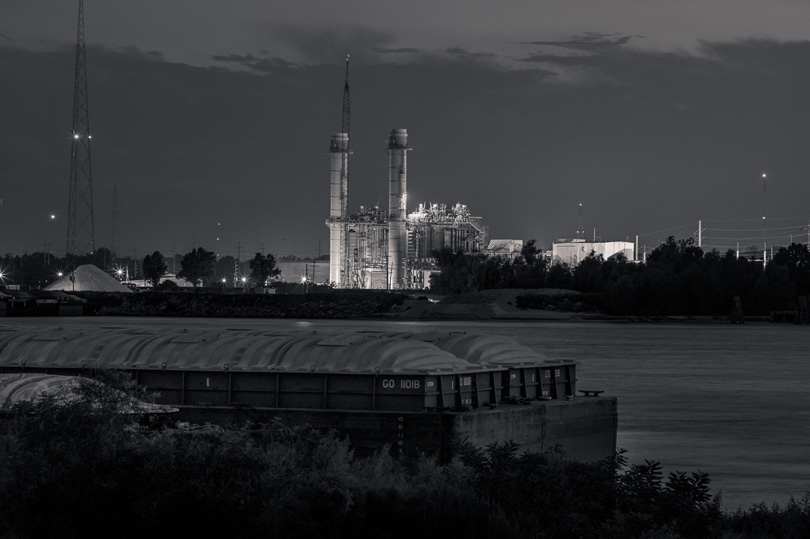
But, doesn’t the internet need photographs? Why aren’t photographers just shifting from magazines and newspapers to corporate web sites, online magazines, blogs, and web sites, as their client base? That has happened to some extent, but that transition, which could have been rather painless, relatively speaking, was severely undermined by the ease with which quality photographs could now be created. The internet is filled with photographs, just as family albums are filled with snapshots, and professional photographers are primarily responsible for neither. The internet realm is the achievement of everyman.
It was easy enough to predict that the arrival of the internet would lead to the decline of newspapers and magazines. It was just a matter of how fast it would happen. The decline of art, or “coffee table,” books was more difficult to foresee. I, for one, felt that these types of books would be a stalwart. Their production values and permanence, complemented by their superior, more tangible, experience when compared to a computer screen, would make them invincible to internet incursion. This has largely been true. Photographic works in book form are not being widely published as internet or e-book products yet. But, they are no longer being as widely published on the printed page either. Book sales now, compared to the pre-internet era, are down and not just in small percentage points, but substantially, and this is particularly true for photography books. Because major trade publishers are “for profit” operations, dramatically reduced sales mean that far fewer projects will be published. The fact that photographers are now having a greater problem getting projects published through major publishing houses, has spawned a cottage industry built around “self-publishing,” an extraordinary misnomer. The phenomenon should be called “self-printing.” Lithographic printing has always been something any individual could pursue, as long as their bank account was in order. It’s widely available and accessible to anyone. Digital technology has helped make it cheaper. Small printing runs are now far more feasible and getting back on press is quicker. All well and good, but world wide distribution and marketing, which the established publishing houses provide, are indispensable to the process, and this is not something any private individual, can readily do. It’s like the difference between the prototype development phase of a product and the mass production and marketing of it. Mass marketing and promotion (of anything) can be a difficult proposition when conducted single-handedly from a spare room, with or without the help of the internet. Sure, the internet has made self-printing more viable, but is no substitute for global distribution networks; publisher’s sales representatives, who call on every wholesaler and retailer in the business; publicists who churn out press releases and spend hours on the phone daily with book reviewers and media contacts; and all the rest. If you think the primary thing that publishers do for you is print your book, then you haven’t done your first one yet.
David Rae Morris has experienced both sides of the publishing spectrum. He authored, with his dad, the writer Willie Morris, My Mississippi, which was published in 2000 by University Press of Mississippi, one of the more noted academic presses in the South. It’s a fine work that’s in my personal book collection. But, David Rae has also tried his hand at self-publishing. He lives a block away from the beloved New Orleans dive bar—Vaughn’s Lounge. During the 2009 football season, which saw the Saints win the NFC, and then go on to win the Super Bowl in 2010, David Rae pursued a documentary portrait project photographing Saints fans in their “Who Dat” game garb at Vaughn’s. He produced a Blurb book from the project, titled Who Dat Nation at Vaughn’s Lounge. There was a small format trade edition, which sold for $20, and a larger gallery edition, which included a signed and numbered print, and sold for $70. Both were “published” on Blurb’s web site. He sold about 20 copies of the trade edition and a handful of the gallery edition, “mostly to friends.” He shot the project on film and described its financial success thusly, “I lost thousands.” Self-publishing stories vary, just as dramatically as the stories associated with major trade publishers, but David Rae’s narrative about his Blurb experience is not atypical. Selling through the internet is just not as viable as having your book available in all the brick and mortar retail bookstores and on Amazon. Blurb, is not only in an entirely different league, it’s a different ball game, than the one played by the likes of Abrams, Te Neues, Taschen, Chronicle, Phaidon, Steidl, Rizzoli, Thames & Hudson, and the many other photographic book publishers too numerous to mention.
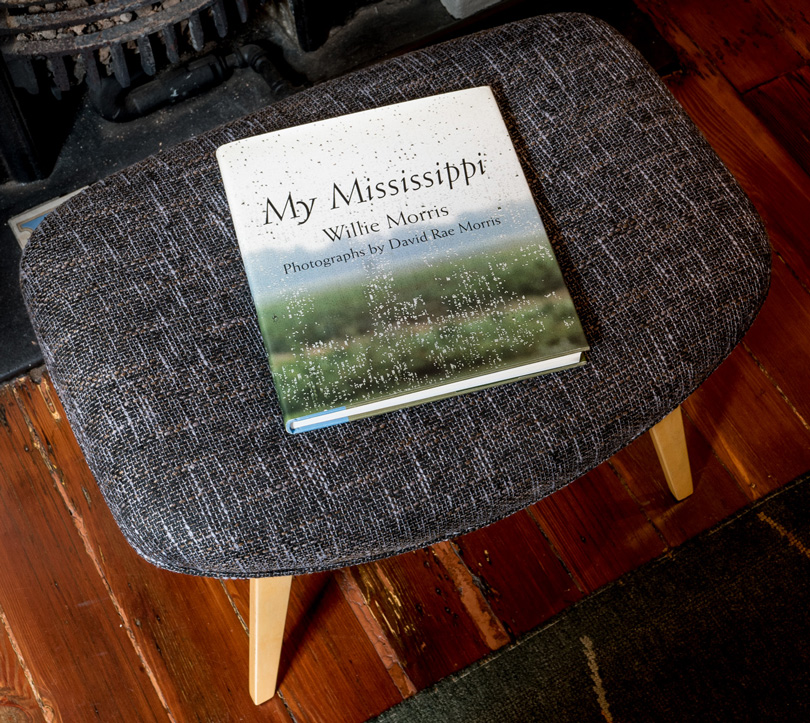
Alex MacLean’s book publishing experience, and current outlook on the industry, doesn’t dispute David Rae’s, or my own, for that matter. Alex has authored or photographed 11 published photographic titles and has worked with Abrams, Rizzoli, Yale University Press, and Thames and Hudson, among others. His publishing history is exemplary and has received notable critical acclaim. Many of his projects focus on climate change and unsustainable, environmentally-insensitive development—hot button and highly relevant topics of our day. Alex readily admitted that from his experience sales now are nothing like they were pre-internet. He sees Amazon as a big part of the sales problem because Amazon sells used books quite cheaply and frequently the used titles are only slightly used and recently published. Authors get no royalty on sales of used titles and publishers derive no income either. The other problem, which Amazon has contributed to, is that no one purchases books impulsively anymore. Sales at book events, gallery receptions, openings, and specialty retailers, are down. People wait and buy the book later on Amazon, at a discount, provided they remember to do so. A deferred purchase frequently becomes a lost purchase. Out of sight, out of mind. When I asked Alex what he thought about the future of book publishing and what that might hold for him, he told me “Sometimes I feel like I’ve done my last book. They’re a lot of work and difficult to execute.” He didn’t need to elaborate further, I understood what he meant. The return is not what it once was and it’s increasingly challenging to get up for it. He also commented that Blurb, “Takes the wind out of your sails.” I knew what he meant there too. Blurb has created the impression that anyone can claim to have authored a photo book, which is true. But, Blurb is merely a high tech twist on vanity press. The general public has always had some difficulty identifying and understanding the difference between vanity press and mainstream trade and academic publishing. But, that’s hardly the real problem, in my view, which is getting the public to pay for content. A number of ill-advised moves in the creative industries has fostered a culture where folks now believe content should be free. Someone else will pay for it—an advertiser, the government, a non-profit arts foundation, an eccentric philanthropist, or maybe it’s a loss leader for a venture capitalist. It doesn’t matter what the behind the scenes monetization structure might be, so long as the content is free. The second you try to charge for it, the hordes will scour around elsewhere for free content.
As for my personal experience with the authoring of photographic books, it has been a vital part of my photographic practice, since the mid-80s. Magazine publishing had been waning for two decades, and the void was being filled by book publishers. Book length photo essays devoted to travel, architecture, culinary arts, collecting, culture, the fine arts, and a wide spectrum of documentary and reportage subjects, came to be widely published in book form by the 70s and 80s. The art book provided a vital forum for photographers that magazines were increasingly having difficulty supporting. Life magazine may have footed the bill for Eugene Smith to travel to the small Spanish village of Deleitosa in 1950, and pay him a competitive rate for weeks, as he produced the images for his iconic feature Spanish Village. But, by the 70s, this type of ambitious, expensive, editorial assignment was virtually unheard of. This didn’t stop Smith’s pursuit of the photo essay, however. Minamata, an equally iconic photo essay depicting the horror of mercury poisoning in the water of the Japanese village of Minamata, was a personally driven project published in book form in 1975 at the end of Smith’s career. By the 80s, a 2 or 3 day editorial assignment was about as substantial as it got for the magazines. Anything more ambitious, would require a book deal. In the current climate, that’s becoming a proposition as rare as a 6 week long editorial assignment was in the 70s or 80s.
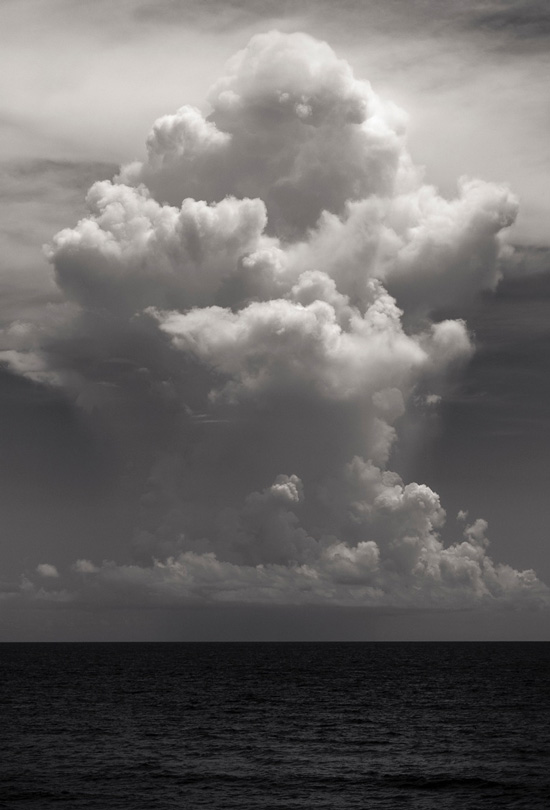
From whatever angle you might choose to look at it, the need to hire highly paid freelancers (or staffers) to make photographs for commercial purposes has been reduced since the film era, which means the profession is smaller, and maybe poorer too. There are exceptions, of course. From my perspective, wedding photography is now more sought after and is considered more prestigious work than in the film era. Digital technology has facilitated this. Weddings have always needed to be a “package deal.” A day rate + expenses doesn’t work well for weddings, which are paid for by the families of the bride and groom, rather than a corporate business with a production budget. The client needed a known and fixed cost upfront, and pricing had to be competitive. If you shot too much film, there was no profit. Digital capture allows the photographer to shoot to his (or her) heart’s content. You can keep shooting until you get a good expression, or until just the right pose or situation unfolds. You can experiment. And you can shoot video too, all with minimal additional cost. Retouching is pretty simple and relatively cheap too. All these technological advantages translated to better results, more choices for the client, more print sales, and more work. Every married couple wanted wedding pictures that rivaled their friends’.
Weddings are not the only example. Fashion and glamor remain popular and seemingly always will. Beauty and fame are universal and indefatigable fetishes. I’m no expert in this field, but I see fashion and glamor magazines continuing to publish and their pages are filled with ads. Both the editorial and advertising content require a professional touch—lighting, paid talent, hair and makeup. It’s a field that still looks like a business with high overhead, specialized talent, and a cut-throat competitive mentality behind it. Sports photojournalism doesn’t look that threatened either. You can’t photograph an NFL game with an iPhone. It’s all about big lenses, knowing where to be when, running around constantly, and being tolerant of colliding with the action from time to time. And sports is a fetish as intense as fashion and glamor. I find it ironic that the most secure positions in photojournalism seem to be for the sports shooters. The same technical demands and specialized equipment are required for photographing rock concerts, theatre, and performances, in general. Seemingly the professionals are left with whatever can’t be shot reliably on an iPhone. Even in the fields that are flourishing, digital technology has resulted in labor savings across the board. A photo shoot for a ready-to-wear catalog now involves less assistants, less lighting, less logistical support, and therefore fewer participants.
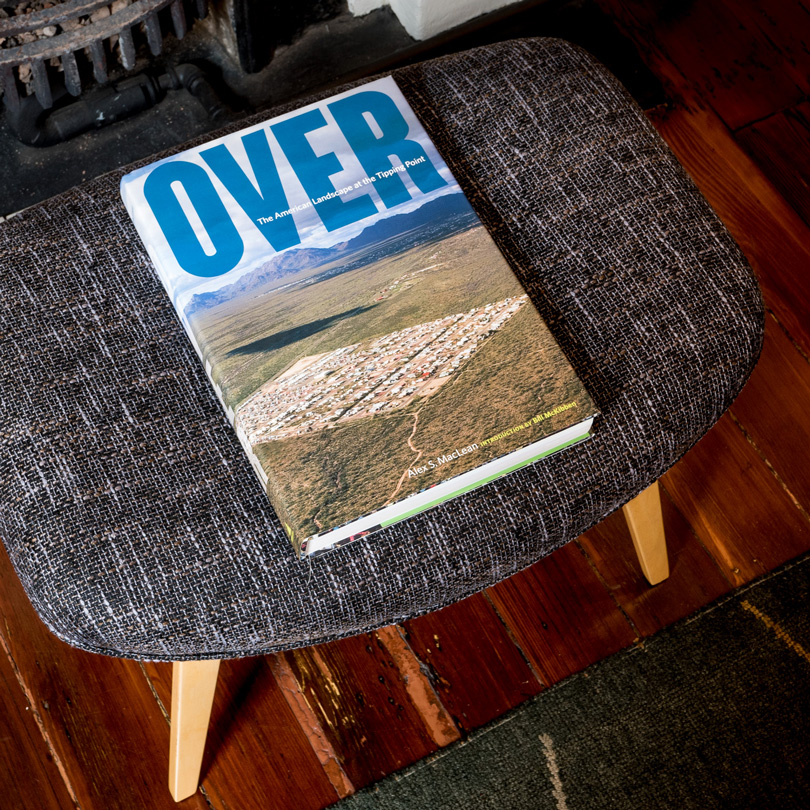
So, the commercial practice of photography is not what it was. The acceptance of photography as a fine art medium and the viability of exhibiting and earning a living via print sales, is another story. That part, thankfully, is easier now. There are more photography galleries; more museums are collecting and exhibiting photography; and the public at large now accepts the medium as an art form. Personally, I have to pinch myself every time I realize that print sales are now my primary source of photographic income, ahead of royalties, and commercial assignments, which I’m pursuing less now, by choice. Alex MacLean, who like myself is represented by galleries in multiple markets, commented, “Print sales are where the money is now.” I asked all five photographers a common question during the interviews, “Is photography more, or less, prestigious and lucrative now than it once was. Four of the five answered “less.” Carter Tomassi was the lone respondent who replied differently, “It’s more prestigious now. You’re readily accepted as an artist. There’s no argument about that anymore and photographs sell for exponentially more money now.” Print sales and the pervasive recognition of photography as a fine art is the one shining hope we can all hitch our stars to. However, that doesn’t translate to a viable living, for the vast majority of those who choose to pursue it. Universities don’t offer majors in mogul, celebrity, or pop icon, studies for a reason. These are fields with a haphazard career path, and which are too rare, complex, and even at times nefarious, to be taught. Schools can only teach courses and offer extracurricular endeavors, which may offer some small degree of preparation for these kinds of improbable and (in)famous landing places. Rare and complex career paths don’t deter schools from offering degrees in fine art, however. Schools can teach you to paint, draw, sculpt, photograph, film, and all the rest, but they can’t teach you to be a successful, collected, internationally famous artist. Virtually all students at all levels of academic study, beginning with grammar school, achieve a certain level of literacy, but very few will go on to be successful writers. What high school guidance counselor has ever told a graduating senior, who is at a loss for what they will now do with themselves, “You at least learned how to read and write, why don’t you think about pursuing a career as a novelist?” It doesn’t quite happen that way. Prodigy talent has to be recognized early, developed intensively, provoked to over-excel with their already superior abilities, and then maybe the top 5%, who are so identified and challenged, will make it. The other 95% will, in the end, get the standard conciliatory career advice, “Don’t quit your day job just yet.”
As difficult as it is to become a commercially successful, aka famous, artist, the fact this is now an easier path for photographers shouldn’t be trivialized. If 5% make it to the top, that’s far better than the .01% that made it prior to the 1950s. (BTW, these are theoretical numbers. Don’t waste your time with google. Just trust me. More photographers are selling prints for higher prices today than were doing so decades ago.) This is real progress, but is it the sustenance of a culture or does it sustain an industry? Photography as an art form, is a small subset of the art world as a whole. It’s one media among many and is relatively new. When I took a survey course in art history in college in 1973, of the epidemic of artworks shown to the class from antiquity to the present day, only 1 was a photograph. It was a Diane Arbus image— “A Jewish giant at home with his parents in the Bronx, NY, 1970.” The index for the class textbook, H. W. Janson’s History of Art: A Survey of the Major Visual Arts from the Dawn of History to the Present Day, contained only 5 single page references under the heading “photography” and no photographs were presented as works of art in its entire 616 pages. The index did not reference any 19th Century historical processes, such as “daguerrotype” or “ambrotype” either. The text contained hundreds of photographs of architecture, furniture, sculpture, and interiors, but no photographs were presented as works of art in their own right. The edition had just been revised 4 years previously in 1969, 130 years after the advent of photography, but then, this was the 70s.

I think it’s important to acknowledge the application of photography is widely varied and includes many applications that are devoid of any real artistic aspirations. Photography is not inherently an art form any more than communication via the written word is. Painting houses is quite a different livelihood from painting portraits or genre scenes, too. But, if photography is to be considered a career, there are only so many ways it can be monetized. Art is commerce. Artists accept and execute commissions. The art business involves the sale of tangible objects. If photography, as an art form, is replacing the commissioning of photography on the printed page, in newspapers, magazines, and books, then it’s certainly legitimate to scrutinize its career potential in a comparative way. Commercial and editorial photographers considered themselves artists. Photographing for a magazine was considered an artistic endeavor. Irving Penn was a master of the still life. Eugene Smith’s printing technique of overexposing the print, reducing all the values to murky shadows and then using bleach (potassium ferrocyanide) to bring out the key details, is descended from Caravaggio’s chiaroscuro. The photo essay, when properly executed, as it was with Bruce Davidson’s East 100th Street, or Smith’s Spanish Village, or Frank’s The Americans, presented powerful visual narratives that rivaled those of literary giants. It is an egregious underestimation to think of this sort of photography, and this era of photography, as a lesser art because it wasn’t as prominently displayed in museums, or because prints failed to command high prices with collectors. The contemporary potential of photography as art form, though it may be lucrative for a handful of artist practitioners, is minuscule in comparison to the careers, in sheer numbers, the printed page once provided.
Photography, as an applied art, is still taught in art school. It remains an important field in schools of journalism too. Thousands of practitioners support themselves with their photographic skills, and for these individuals, it is a viable career. And there are careers in the supporting fields too. Museums have photographic staffers that photograph art, objects, ephemera. There are labs that provide photographic services, from the traditional ones—processing film and making silver gelatin prints, to the digital ones—scanning film, inkjet printing, digital retouching, mounting and framing. So, it is totally erroneous to infer, or suggest, that the industry is dying. But, it has changed fundamentally, and it continues to change. In the final segment, Photography Tomorrow, I’ll speculate, along with those photographers I interviewed for this series, where photography might be 20 or 30 years from now. Is it on the road to oblivion or is it poised for renewed growth? Will it survive as a freestanding career path, or does it get folded into a broader path, where “photographer” becomes a subset of an array of skills—videographer/video editor/visual technician/photoshop technician/and photographer. Thrown in like an afterthought at the end is the inferred message: I know my way around a stills camera, just like every other literate soul on the planet. Photography, like reading and writing, is now a means of expression common to everyone and exclusive to no one. In the final segment, Photography Tomorrow, I want to look at the implications of this new reality.
—Richard Sexton
Richard Sexton is a fine art and media photographer, who is currently working on his 14th published book and his 3rd traveling museum exhibit. Complete information about his work and career in photography can be found on his website: www.richardsextonstudio.com.
 Canterbury Cathedral; Canterbury, England for Etak, Inc., A Unit of News Corporation
Canterbury Cathedral; Canterbury, England for Etak, Inc., A Unit of News Corporation
© Mike Blumensaadt
Mike Blumensaadt
www.matrixphotographics.com
Mike Blumensaadt
www.matrixphotographics.com
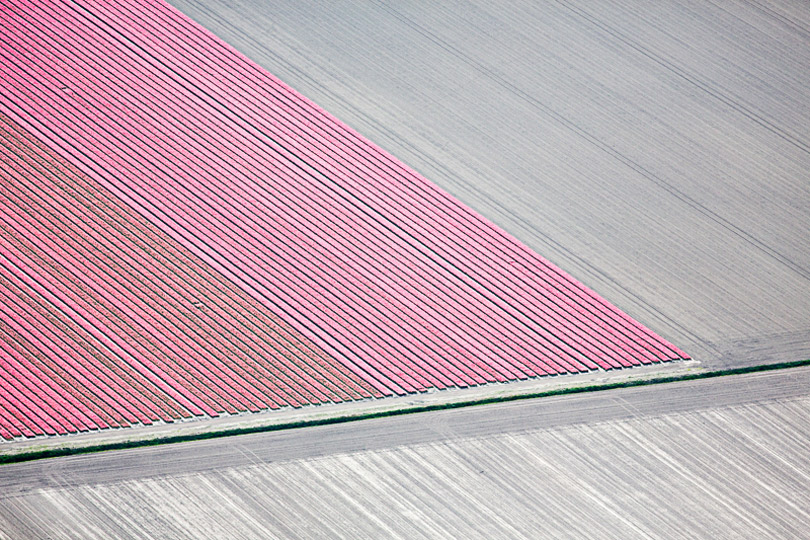
Alex MacLean
http://www.alexmaclean.com
http://www.landslides.com

David Rae Morris
Website: http://www.davidraemorris.com
Facebook: https://www.facebook.com/David-Rae-Morris-PhotographerFilmmaker-16730127345571
https://www.facebook.com/YazooRevisited
Twitter: @DavidRaeMorris

Myko
www.multistitch.com
www.mykophotography.com
www.mykophotography.com/commercial

Carter Tomassi
http://messyoptics.com
Richard Sexton
June 2016
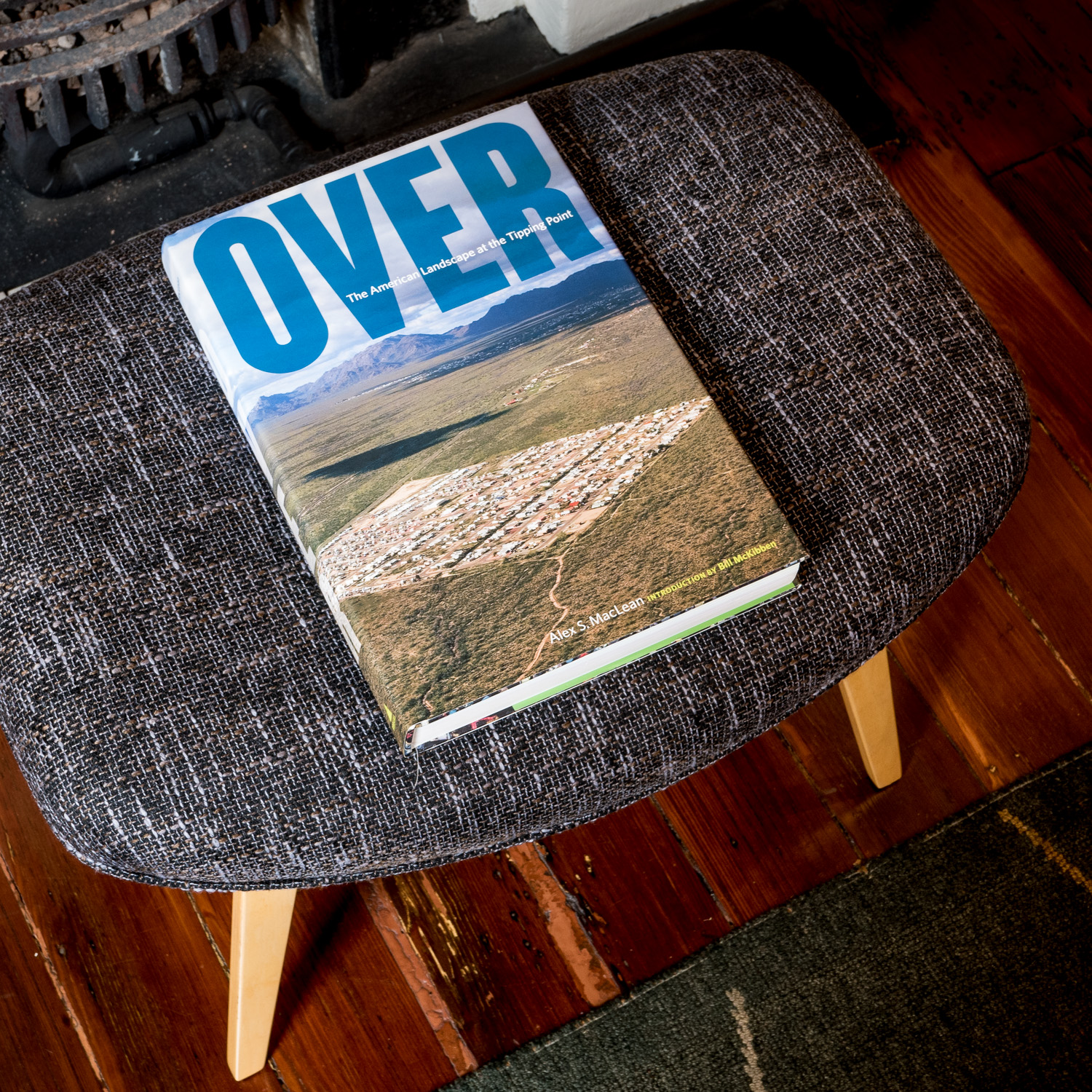
Lorem ipsum dolor sit amet, consectetur adipiscing elit, sed do eiusmod tempor incididunt ut labore et dolore magna aliqua. Ut enim ad minim veniam, quis nostrud exercitation ullamco laboris nisi ut aliquip ex ea commodo consequat. Duis aute irure dolor in reprehenderit in voluptate velit esse cillum dolore eu fugiat nulla pariatur. Excepteur sint occaecat cupidatat non proident, sunt in culpa qui officia deserunt mollit anim id est laborum.
Lorem ipsum dolor sit amet, consectetur adipiscing elit, sed do eiusmod tempor incididunt ut labore et dolore magna aliqua. Ut enim ad minim veniam, quis nostrud exercitation ullamco laboris nisi ut aliquip ex ea commodo consequat. Duis aute irure dolor in reprehenderit in voluptate velit esse cillum dolore eu fugiat nulla pariatur. Excepteur sint occaecat cupidatat non proident, sunt in culpa qui officia deserunt mollit anim id est laborum.
Lorem ipsum dolor sit amet, consectetur adipiscing elit, sed do eiusmod tempor incididunt ut labore et dolore magna aliqua. Ut enim ad minim veniam, quis nostrud exercitation ullamco laboris nisi ut aliquip ex ea commodo consequat. Duis aute irure dolor in reprehenderit in voluptate velit esse cillum dolore eu fugiat nulla pariatur. Excepteur sint occaecat cupidatat non proident, sunt in culpa qui officia deserunt mollit anim id est laborum.
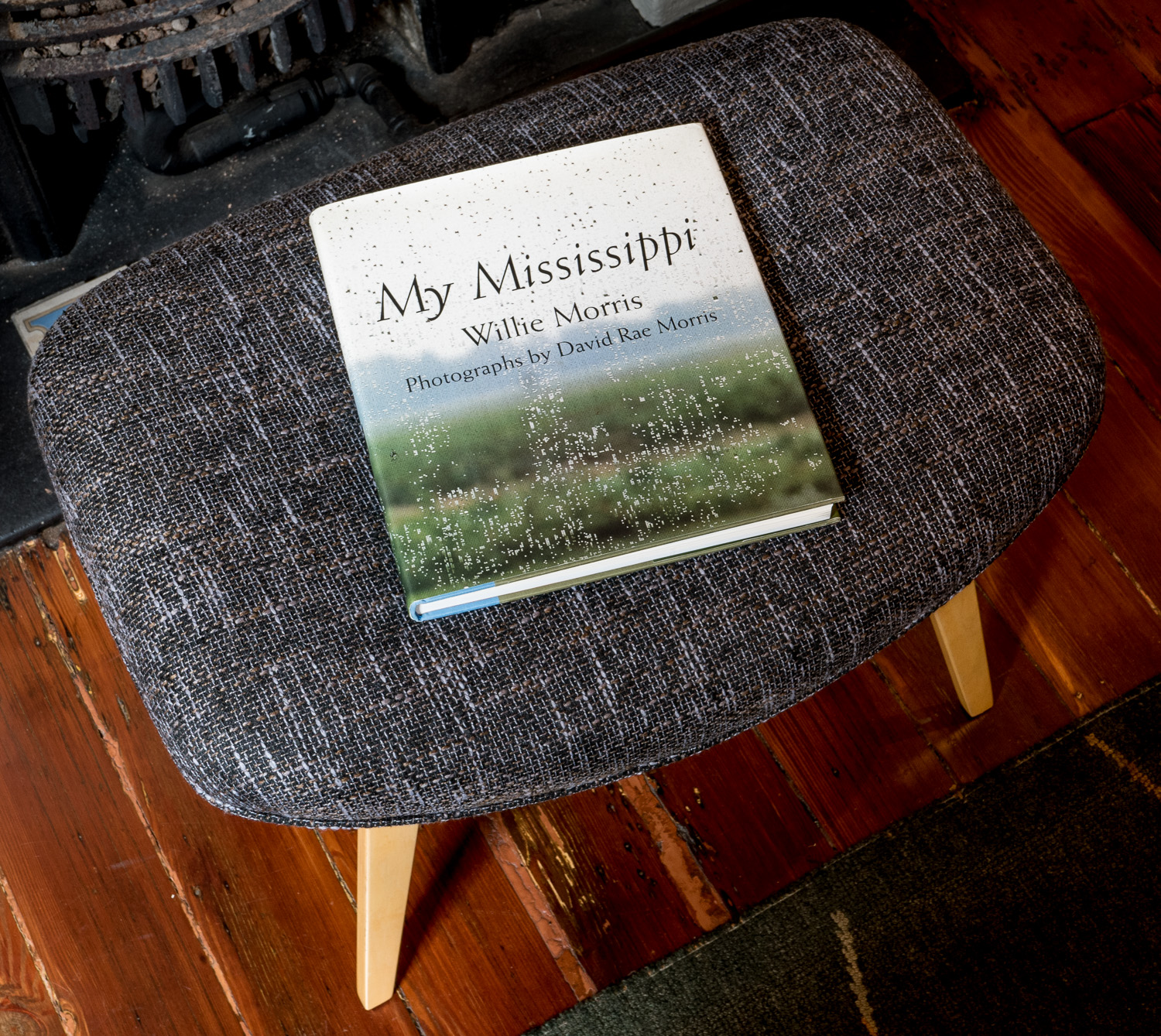
Lorem ipsum dolor sit amet, consectetur adipiscing elit, sed do eiusmod tempor incididunt ut labore et dolore magna aliqua. Ut enim ad minim veniam, quis nostrud exercitation ullamco laboris nisi ut aliquip ex ea commodo consequat. Duis aute irure dolor in reprehenderit in voluptate velit esse cillum dolore eu fugiat nulla pariatur. Excepteur sint occaecat cupidatat non proident, sunt in culpa qui officia deserunt mollit anim id est laborum.
Lorem ipsum dolor sit amet, consectetur adipiscing elit, sed do eiusmod tempor incididunt ut labore et dolore magna aliqua. Ut enim ad minim veniam, quis nostrud exercitation ullamco laboris nisi ut aliquip ex ea commodo consequat. Duis aute irure dolor in reprehenderit in voluptate velit esse cillum dolore eu fugiat nulla pariatur. Excepteur sint occaecat cupidatat non proident, sunt in culpa qui officia deserunt mollit anim id est laborum.
Lorem ipsum dolor sit amet, consectetur adipiscing elit, sed do eiusmod tempor incididunt ut labore et dolore magna aliqua. Ut enim ad minim veniam, quis nostrud exercitation ullamco laboris nisi ut aliquip ex ea commodo consequat. Duis aute irure dolor in reprehenderit in voluptate velit esse cillum dolore eu fugiat nulla pariatur. Excepteur sint occaecat cupidatat non proident, sunt in culpa qui officia deserunt mollit anim id est laborum.
Lorem ipsum dolor sit amet, consectetur adipiscing elit, sed do eiusmod tempor incididunt ut labore et dolore magna aliqua. Ut enim ad minim veniam, quis nostrud exercitation ullamco laboris nisi ut aliquip ex ea commodo consequat. Duis aute irure dolor in reprehenderit in voluptate velit esse cillum dolore eu fugiat nulla pariatur. Excepteur sint occaecat cupidatat non proident, sunt in culpa qui officia deserunt mollit anim id est laborum.
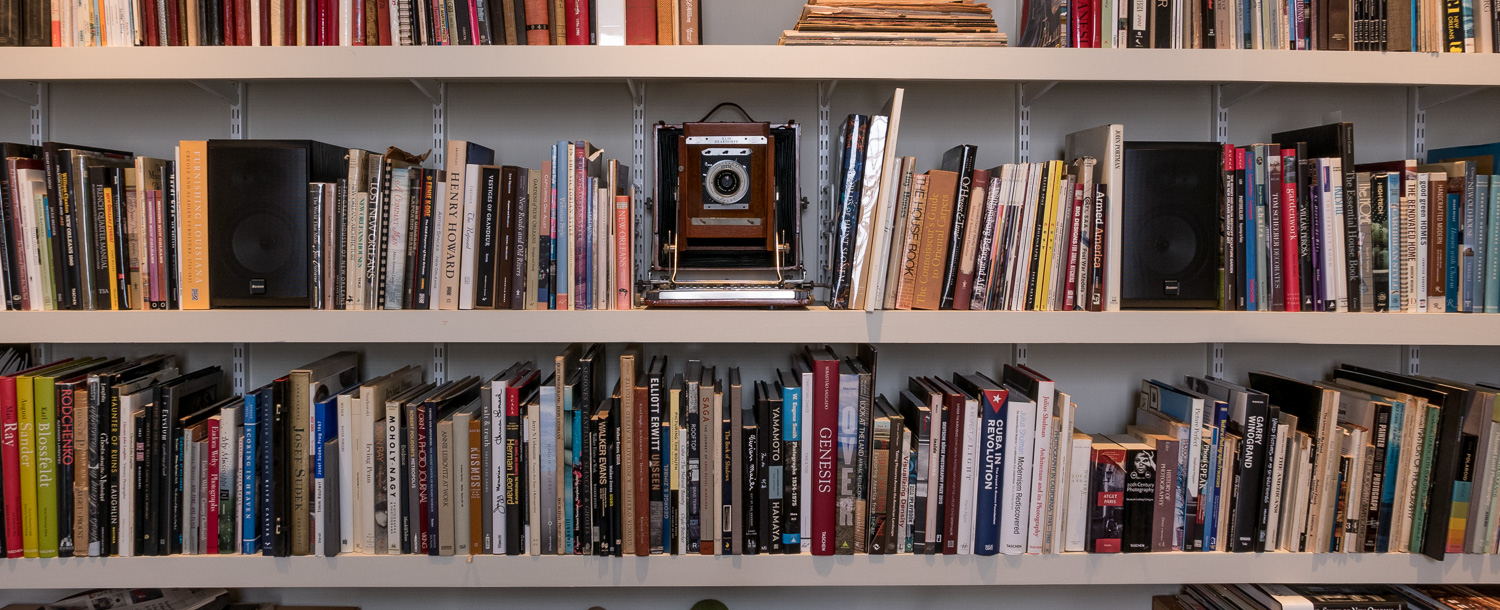
Lorem ipsum dolor sit amet, consectetur adipiscing elit, sed do eiusmod tempor incididunt ut labore et dolore magna aliqua. Ut enim ad minim veniam, quis nostrud exercitation ullamco laboris nisi ut aliquip ex ea commodo consequat. Duis aute irure dolor in reprehenderit in voluptate velit esse cillum dolore eu fugiat nulla pariatur. Excepteur sint occaecat cupidatat non proident, sunt in culpa qui officia deserunt mollit anim id est laborum.
Lorem ipsum dolor sit amet, consectetur adipiscing elit, sed do eiusmod tempor incididunt ut labore et dolore magna aliqua. Ut enim ad minim veniam, quis nostrud exercitation ullamco laboris nisi ut aliquip ex ea commodo consequat. Duis aute irure dolor in reprehenderit in voluptate velit esse cillum dolore eu fugiat nulla pariatur. Excepteur sint occaecat cupidatat non proident, sunt in culpa qui officia deserunt mollit anim id est laborum.
Lorem ipsum dolor sit amet, consectetur adipiscing elit, sed do eiusmod tempor incididunt ut labore et dolore magna aliqua. Ut enim ad minim veniam, quis nostrud exercitation ullamco laboris nisi ut aliquip ex ea commodo consequat. Duis aute irure dolor in reprehenderit in voluptate velit esse cillum dolore eu fugiat nulla pariatur. Excepteur sint occaecat cupidatat non proident, sunt in culpa qui officia deserunt mollit anim id est laborum.
Lorem ipsum dolor sit amet, consectetur adipiscing elit, sed do eiusmod tempor incididunt ut labore et dolore magna aliqua. Ut enim ad minim veniam, quis nostrud exercitation ullamco laboris nisi ut aliquip ex ea commodo consequat. Duis aute irure dolor in reprehenderit in voluptate velit esse cillum dolore eu fugiat nulla pariatur. Excepteur sint occaecat cupidatat non proident, sunt in culpa qui officia deserunt mollit anim id est laborum.
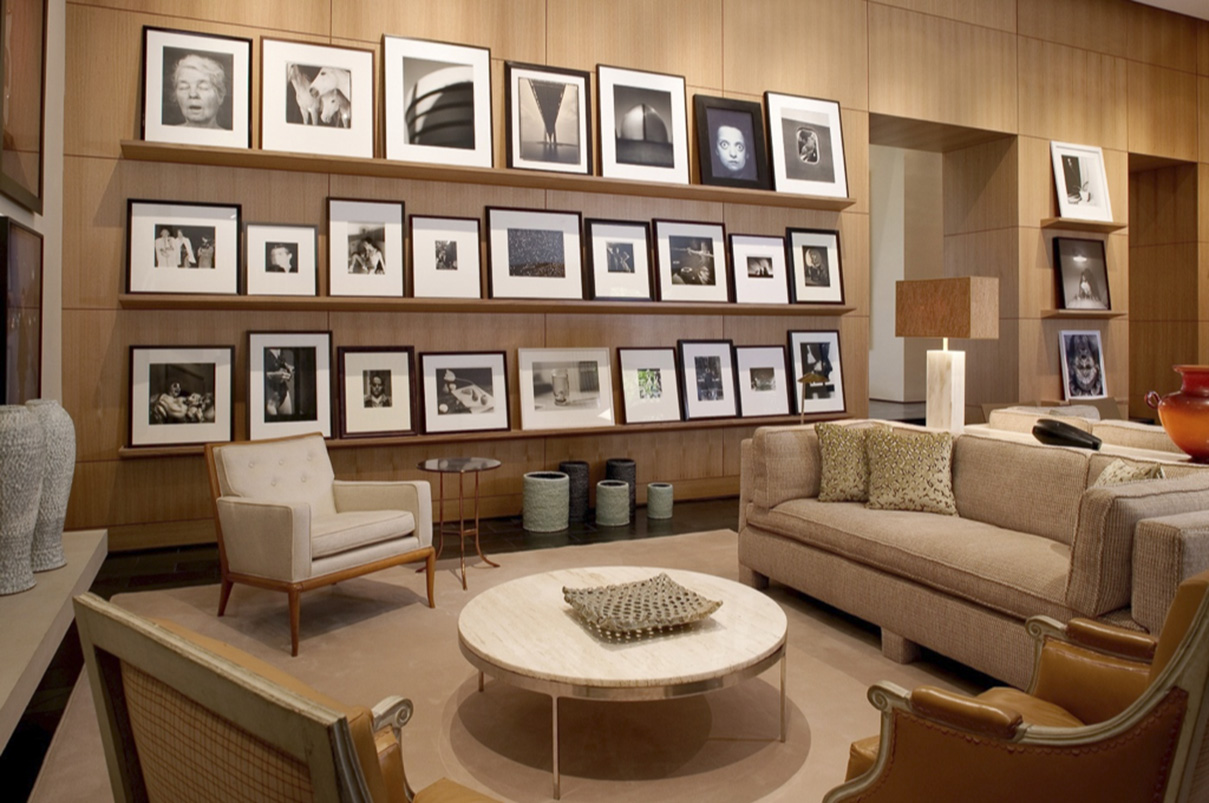
Lorem ipsum dolor sit amet, consectetur adipiscing elit, sed do eiusmod tempor incididunt ut labore et dolore magna aliqua. Ut enim ad minim veniam, quis nostrud exercitation ullamco laboris nisi ut aliquip ex ea commodo consequat. Duis aute irure dolor in reprehenderit in voluptate velit esse cillum dolore eu fugiat nulla pariatur. Excepteur sint occaecat cupidatat non proident, sunt in culpa qui officia deserunt mollit anim id est laborum.
Lorem ipsum dolor sit amet, consectetur adipiscing elit, sed do eiusmod tempor incididunt ut labore et dolore magna aliqua. Ut enim ad minim veniam, quis nostrud exercitation ullamco laboris nisi ut aliquip ex ea commodo consequat. Duis aute irure dolor in reprehenderit in voluptate velit esse cillum dolore eu fugiat nulla pariatur. Excepteur sint occaecat cupidatat non proident, sunt in culpa qui officia deserunt mollit anim id est laborum.

Lorem ipsum dolor sit amet, consectetur adipiscing elit, sed do eiusmod tempor incididunt ut labore et dolore magna aliqua. Ut enim ad minim veniam, quis nostrud exercitation ullamco laboris nisi ut aliquip ex ea commodo consequat. Duis aute irure dolor in reprehenderit in voluptate velit esse cillum dolore eu fugiat nulla pariatur. Excepteur sint occaecat cupidatat non proident, sunt in culpa qui officia deserunt mollit anim id est laborum.
Lorem ipsum dolor sit amet, consectetur adipiscing elit, sed do eiusmod tempor incididunt ut labore et dolore magna aliqua. Ut enim ad minim veniam, quis nostrud exercitation ullamco laboris nisi ut aliquip ex ea commodo consequat. Duis aute irure dolor in reprehenderit in voluptate velit esse cillum dolore eu fugiat nulla pariatur. Excepteur sint occaecat cupidatat non proident, sunt in culpa qui officia deserunt mollit anim id est laborum.
Lorem ipsum dolor sit amet, consectetur adipiscing elit, sed do eiusmod tempor incididunt ut labore et dolore magna aliqua. Ut enim ad minim veniam, quis nostrud exercitation ullamco laboris nisi ut aliquip ex ea commodo consequat. Duis aute irure dolor in reprehenderit in voluptate velit esse cillum dolore eu fugiat nulla pariatur. Excepteur sint occaecat cupidatat non proident, sunt in culpa qui officia deserunt mollit anim id est laborum.
Lorem ipsum dolor sit amet, consectetur adipiscing elit, sed do eiusmod tempor incididunt ut labore et dolore magna aliqua. Ut enim ad minim veniam, quis nostrud exercitation ullamco laboris nisi ut aliquip ex ea commodo consequat. Duis aute irure dolor in reprehenderit in voluptate velit esse cillum dolore eu fugiat nulla pariatur. Excepteur sint occaecat cupidatat non proident, sunt in culpa qui officia deserunt mollit anim id est laborum.

Lorem ipsum dolor sit amet, consectetur adipiscing elit, sed do eiusmod tempor incididunt ut labore et dolore magna aliqua. Ut enim ad minim veniam, quis nostrud exercitation ullamco laboris nisi ut aliquip ex ea commodo consequat. Duis aute irure dolor in reprehenderit in voluptate velit esse cillum dolore eu fugiat nulla pariatur. Excepteur sint occaecat cupidatat non proident, sunt in culpa qui officia deserunt mollit anim id est laborum.

Lorem ipsum dolor sit amet, consectetur adipiscing elit, sed do eiusmod tempor incididunt ut labore et dolore magna aliqua. Ut enim ad minim veniam, quis nostrud exercitation ullamco laboris nisi ut aliquip ex ea commodo consequat. Duis aute irure dolor in reprehenderit in voluptate velit esse cillum dolore eu fugiat nulla pariatur. Excepteur sint occaecat cupidatat non proident, sunt in culpa qui officia deserunt mollit anim id est laborum.
Lorem ipsum dolor sit amet, consectetur adipiscing elit, sed do eiusmod tempor incididunt ut labore et dolore magna aliqua. Ut enim ad minim veniam, quis nostrud exercitation ullamco laboris nisi ut aliquip ex ea commodo consequat. Duis aute irure dolor in reprehenderit in voluptate velit esse cillum dolore eu fugiat nulla pariatur. Excepteur sint occaecat cupidatat non proident, sunt in culpa qui officia deserunt mollit anim id est laborum.
Lorem ipsum dolor sit amet, consectetur adipiscing elit, sed do eiusmod tempor incididunt ut labore et dolore magna aliqua. Ut enim ad minim veniam, quis nostrud exercitation ullamco laboris nisi ut aliquip ex ea commodo consequat. Duis aute irure dolor in reprehenderit in voluptate velit esse cillum dolore eu fugiat nulla pariatur. Excepteur sint occaecat cupidatat non proident, sunt in culpa qui officia deserunt mollit anim id est laborum.
Lorem ipsum dolor sit amet, consectetur adipiscing elit, sed do eiusmod tempor incididunt ut labore et dolore magna aliqua. Ut enim ad minim veniam, quis nostrud exercitation ullamco laboris nisi ut aliquip ex ea commodo consequat. Duis aute irure dolor in reprehenderit in voluptate velit esse cillum dolore eu fugiat nulla pariatur. Excepteur sint occaecat cupidatat non proident, sunt in culpa qui officia deserunt mollit anim id est laborum.

Lorem ipsum dolor sit amet, consectetur adipiscing elit, sed do eiusmod tempor incididunt ut labore et dolore magna aliqua. Ut enim ad minim veniam, quis nostrud exercitation ullamco laboris nisi ut aliquip ex ea commodo consequat. Duis aute irure dolor in reprehenderit in voluptate velit esse cillum dolore eu fugiat nulla pariatur. Excepteur sint occaecat cupidatat non proident, sunt in culpa qui officia deserunt mollit anim id est laborum.

Lorem ipsum dolor sit amet, consectetur adipiscing elit, sed do eiusmod tempor incididunt ut labore et dolore magna aliqua. Ut enim ad minim veniam, quis nostrud exercitation ullamco laboris nisi ut aliquip ex ea commodo consequat. Duis aute irure dolor in reprehenderit in voluptate velit esse cillum dolore eu fugiat nulla pariatur. Excepteur sint occaecat cupidatat non proident, sunt in culpa qui officia deserunt mollit anim id est laborum.
Lorem ipsum dolor sit amet, consectetur adipiscing elit, sed do eiusmod tempor incididunt ut labore et dolore magna aliqua. Ut enim ad minim veniam, quis nostrud exercitation ullamco laboris nisi ut aliquip ex ea commodo consequat. Duis aute irure dolor in reprehenderit in voluptate velit esse cillum dolore eu fugiat nulla pariatur. Excepteur sint occaecat cupidatat non proident, sunt in culpa qui officia deserunt mollit anim id est laborum.
Lorem ipsum dolor sit amet, consectetur adipiscing elit, sed do eiusmod tempor incididunt ut labore et dolore magna aliqua. Ut enim ad minim veniam, quis nostrud exercitation ullamco laboris nisi ut aliquip ex ea commodo consequat. Duis aute irure dolor in reprehenderit in voluptate velit esse cillum dolore eu fugiat nulla pariatur. Excepteur sint occaecat cupidatat non proident, sunt in culpa qui officia deserunt mollit anim id est laborum.
Lorem ipsum dolor sit amet, consectetur adipiscing elit, sed do eiusmod tempor incididunt ut labore et dolore magna aliqua. Ut enim ad minim veniam, quis nostrud exercitation ullamco laboris nisi ut aliquip ex ea commodo consequat. Duis aute irure dolor in reprehenderit in voluptate velit esse cillum dolore eu fugiat nulla pariatur. Excepteur sint occaecat cupidatat non proident, sunt in culpa qui officia deserunt mollit anim id est laborum.

Lorem ipsum dolor sit amet, consectetur adipiscing elit, sed do eiusmod tempor incididunt ut labore et dolore magna aliqua. Ut enim ad minim veniam, quis nostrud exercitation ullamco laboris nisi ut aliquip ex ea commodo consequat. Duis aute irure dolor in reprehenderit in voluptate velit esse cillum dolore eu fugiat nulla pariatur. Excepteur sint occaecat cupidatat non proident, sunt in culpa qui officia deserunt mollit anim id est laborum.
Lorem ipsum dolor sit amet, consectetur adipiscing elit, sed do eiusmod tempor incididunt ut labore et dolore magna aliqua. Ut enim ad minim veniam, quis nostrud exercitation ullamco laboris nisi ut aliquip ex ea commodo consequat. Duis aute irure dolor in reprehenderit in voluptate velit esse cillum dolore eu fugiat nulla pariatur. Excepteur sint occaecat cupidatat non proident, sunt in culpa qui officia deserunt mollit anim id est laborum.

Lorem ipsum dolor sit amet, consectetur adipiscing elit, sed do eiusmod tempor incididunt ut labore et dolore magna aliqua. Ut enim ad minim veniam, quis nostrud exercitation ullamco laboris nisi ut aliquip ex ea commodo consequat. Duis aute irure dolor in reprehenderit in voluptate velit esse cillum dolore eu fugiat nulla pariatur. Excepteur sint occaecat cupidatat non proident, sunt in culpa qui officia deserunt mollit anim id est laborum.
Lorem ipsum dolor sit amet, consectetur adipiscing elit, sed do eiusmod tempor incididunt ut labore et dolore magna aliqua. Ut enim ad minim veniam, quis nostrud exercitation ullamco laboris nisi ut aliquip ex ea commodo consequat. Duis aute irure dolor in reprehenderit in voluptate velit esse cillum dolore eu fugiat nulla pariatur. Excepteur sint occaecat cupidatat non proident, sunt in culpa qui officia deserunt mollit anim id est laborum.
Lorem ipsum dolor sit amet, consectetur adipiscing elit, sed do eiusmod tempor incididunt ut labore et dolore magna aliqua. Ut enim ad minim veniam, quis nostrud exercitation ullamco laboris nisi ut aliquip ex ea commodo consequat. Duis aute irure dolor in reprehenderit in voluptate velit esse cillum dolore eu fugiat nulla pariatur. Excepteur sint occaecat cupidatat non proident, sunt in culpa qui officia deserunt mollit anim id est laborum.
Lorem ipsum dolor sit amet, consectetur adipiscing elit, sed do eiusmod tempor incididunt ut labore et dolore magna aliqua. Ut enim ad minim veniam, quis nostrud exercitation ullamco laboris nisi ut aliquip ex ea commodo consequat. Duis aute irure dolor in reprehenderit in voluptate velit esse cillum dolore eu fugiat nulla pariatur. Excepteur sint occaecat cupidatat non proident, sunt in culpa qui officia deserunt mollit anim id est laborum.

Lorem ipsum dolor sit amet, consectetur adipiscing elit, sed do eiusmod tempor incididunt ut labore et dolore magna aliqua. Ut enim ad minim veniam, quis nostrud exercitation ullamco laboris nisi ut aliquip ex ea commodo consequat. Duis aute irure dolor in reprehenderit in voluptate velit esse cillum dolore eu fugiat nulla pariatur. Excepteur sint occaecat cupidatat non proident, sunt in culpa qui officia deserunt mollit anim id est laborum.
Lorem ipsum dolor sit amet, consectetur adipiscing elit, sed do eiusmod tempor incididunt ut labore et dolore magna aliqua. Ut enim ad minim veniam, quis nostrud exercitation ullamco laboris nisi ut aliquip ex ea commodo consequat. Duis aute irure dolor in reprehenderit in voluptate velit esse cillum dolore eu fugiat nulla pariatur. Excepteur sint occaecat cupidatat non proident, sunt in culpa qui officia deserunt mollit anim id est laborum.
Lorem ipsum dolor sit amet, consectetur adipiscing elit, sed do eiusmod tempor incididunt ut labore et dolore magna aliqua. Ut enim ad minim veniam, quis nostrud exercitation ullamco laboris nisi ut aliquip ex ea commodo consequat. Duis aute irure dolor in reprehenderit in voluptate velit esse cillum dolore eu fugiat nulla pariatur. Excepteur sint occaecat cupidatat non proident, sunt in culpa qui officia deserunt mollit anim id est laborum.

Lorem ipsum dolor sit amet, consectetur adipiscing elit, sed do eiusmod tempor incididunt ut labore et dolore magna aliqua. Ut enim ad minim veniam, quis nostrud exercitation ullamco laboris nisi ut aliquip ex ea commodo consequat. Duis aute irure dolor in reprehenderit in voluptate velit esse cillum dolore eu fugiat nulla pariatur. Excepteur sint occaecat cupidatat non proident, sunt in culpa qui officia deserunt mollit anim id est laborum.
Lorem ipsum dolor sit amet, consectetur adipiscing elit, sed do eiusmod tempor incididunt ut labore et dolore magna aliqua. Ut enim ad minim veniam, quis nostrud exercitation ullamco laboris nisi ut aliquip ex ea commodo consequat. Duis aute irure dolor in reprehenderit in voluptate velit esse cillum dolore eu fugiat nulla pariatur. Excepteur sint occaecat cupidatat non proident, sunt in culpa qui officia deserunt mollit anim id est laborum.
Lorem ipsum dolor sit amet, consectetur adipiscing elit, sed do eiusmod tempor incididunt ut labore et dolore magna aliqua. Ut enim ad minim veniam, quis nostrud exercitation ullamco laboris nisi ut aliquip ex ea commodo consequat. Duis aute irure dolor in reprehenderit in voluptate velit esse cillum dolore eu fugiat nulla pariatur. Excepteur sint occaecat cupidatat non proident, sunt in culpa qui officia deserunt mollit anim id est laborum.
You May Also Enjoy...
Canon EOS Xsi (450D) Field Report
In the 20th CenturyLess than 10 years ago, before digital's rise to dominance, any camera of the same format with interchangeable lenses would take pictures
How Photographs are Sold
The more informative your advertising, the more persuasive it will be. David Ogilvy 1 - Introduction My essay this month focuses on my just-released book:How
